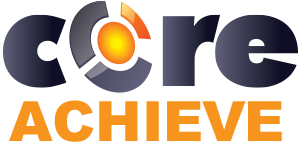How to Utilize the Science of eLearning to Benefit Your Organization
December, 28 2022
Other posts:
Enhancing Team Dynamics for Effective Group Decision-Making with LMS Integration
Organizations increasingly rely on collaborative efforts to solve complex problems, innovate, and adapt to change, but how do we ensure that collaboration is happening.
Maximizing Small Business Potential with Training Technology
Training technologies can push small businesses ahead of their competitors, but what are the factors that go into choosing the right technology?
Unlocking Employee Potential: The Transformative Benefits of an Interactive Learning Management System (LMS)
Interactive training allows for unlocking employee potential, but how is it done?
Building a Robust Sales Pipeline with Training
Every organization wants a streamlined sales pipeline, but building one requires a series of interlocking activities with one of the most important being training.
Strategies for Adapting In-Person Training to Online Platforms
Online training is one of the most flexible ways of delivering training across organizations, but how do you even begin to adapt in-person training into online?
eLearning has been around for 58 years, yet most people don't know about these common eLearning effects... Some are so effective that they show a 167% increase in scores.
Photo by Priyanka Singh on Unsplash
eLearning is not a new (in concept or in practice), in 1968 the Alberta Department of Medicine began offering online to over 20,000 learners over the IBM network. However, despite the 58 years of practice, there still is a plethora of mistakes being made with eLearning content which are completely avoidable if one knows the proper practices.
Proper execution of eLearning content was laid out by Richard E. Mayer from the University of California in his paper “Elements of a Science of eLearning.” In which, Mayer compiles many different studies and breaks down their methodology to cross examine effective practices in eLearning.
What are these methods?
Mayer studied nine different “effects” and how they impacted learner’s scores. These effects are the Modality, contiguity, multimedia, personalization, coherence, redundancy, pretraining, signaling, and pacing effect. Each effect was also given an impact rating, the following list will include the effect, its description, and its impact on the learners’ scores.
- Multimedia Effect (Impact 1.67) – This effect refers to tendency of learners who received a relevant animation along with a narration to perform better than learners who just had a narration.
- Personalization Effect (Impact 1.55) – Straightforwardly, Personalization is the level of conversational tone a narration has: learners who had a narration of conversational tone performed better than those whose narration was formal.
- Pretraining Effect (Impact 1.39) – If an instructor gives component explanations before presenting the main content, learners’ performance will be better than those who received the information after.
- Contiguity Effect (Impact 1.30) – Referring to the time when the narration is played, the contiguity effect shows that learners who got the narration and visual content at the same time did better than those who experienced the narration and visual content at different times.
- Modality Effect (Impact 1.13) – Showing how important narration is, this effect states that learners who received an animation and narration did better than those who got an animation and text.
- Pacing Effect (Impact 1.03) – This effect has become a staple of eLearning; it shows that learners who are about to control the pace of the presentation perform better than those who can’t.
- Coherence Effect (Impact 0.96) – This effect’s name is a bit misleading at first, but it essentially means a reduction of possible distractors, specifically background music and other video clips. Learners who just received the animation and narration did better than learners who got the animation, narration, background music, and other video clips.
- Redundancy Effect (Impact 0.84) – Under a counter-intuitive name, the redundancy effect reflects that learners perform better with narration and animation without on-screen text.
- Signaling Effect (Impact 0.60) – Signaling refers to introducing the sections of the presentation beforehand, the learners who were introduction to the sections performed better than those who weren’t.
Practical Takeaways from These Effects
eLearning is a multimedia experience (or at least it should be)
The pattern of an animation played in tandem with narration is more effective for learners to remember. People can learn through both verbal and visual, so using multimedia will active both at the same time. With all the tools available in eLearning, you should always strive to make it a multimedia experience (just don’t go overboard with the media—coherence effect).
Small changes lead to major differences
This takeaway is based mainly on the personalization effect. The consequence of changing the tone of narration from formal to casual can have a 155% increase in scores, especially because education is often given a formal culture. Don’t be afraid to experiment with how you deliver content—you never know what a change of wording might do.
It’s an informational balancing act
It may be tempting to include all the information that you think may be beneficial or to spice up your content with extra, but as shown with the coherence and redundancy effect, it can have negative impacts. Immediately contradicting that, including extra information like with the signaling or pretraining effect positively impacts course performance. Real value is found whenever a balance is struck between what and how the extra information is delivered. Too much and it’ll distract from the needed information.
Why does all of this matter?
While none of these will give a fool-proof way of skyrocketing effectiveness of your courses, they will increase performance trends. Mattering especially whenever you are buying your courses. Courses can be costly and, if you don’t know what makes a course effective, you could easily be dumping money into an option that’s worse for your goals. It’s not important to build your own course, but it is important to know how to build a good course.

Leave comment: